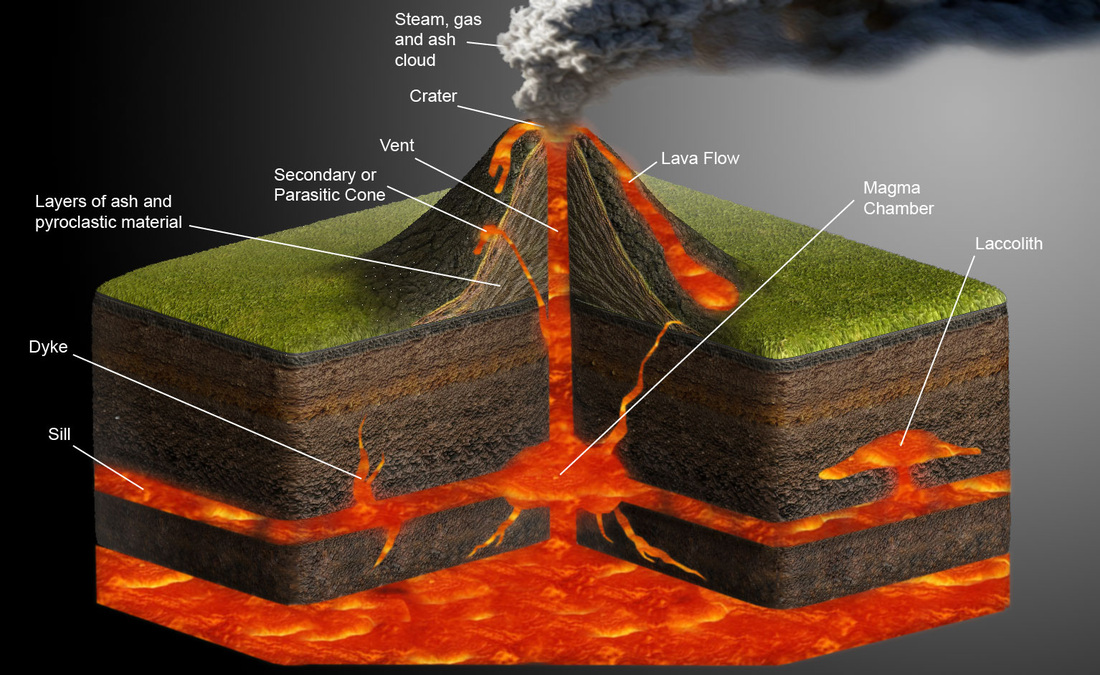 What causes an
eruption in a volcano?
What causes an
eruption in a volcano?
There are many
different types of volcanoes, but they all form in a
similar manor, so I will be describing a brief
overview for the general processes that cause a
volcano to erupt.
As
mentioned in the "Plate Tectonics" section of this
website, magma and pressure are the main cause of a
volcanic eruption. Effectively as the crust melts down
and causes magma, gas and pressure to begin to build
up. What assists the magma in rising to the surface of
the earth is the density of the composition of the
magma. If the magma is less dense than the surrounding
rock, it will eventually reach the surface and erupt.
The rock
composition affects how the magma behaves and even
what kind of volcanoes are formed from that magma.
Scientific American has a great description of the
different types of magma and what kind of eruptions
result from that magma.

 For example, in an
andesitic magma saturated with water and six kilometers
below the surface, about 5 percent of its weight is
dissolved water. As this magma moves toward the surface, the
solubility of the water in the magma decreases, and so the
excess water separates from the magma in the form of
bubbles. As the magma moves closer to the surface, more and
more water exsolves from the magma, thereby increasing the
gas/magma ratio in the conduit. When the volume of bubbles
reaches about 75 percent, the magma disintegrates to
pyroclasts (partially molten and solid fragments) and erupts
explosively.
For example, in an
andesitic magma saturated with water and six kilometers
below the surface, about 5 percent of its weight is
dissolved water. As this magma moves toward the surface, the
solubility of the water in the magma decreases, and so the
excess water separates from the magma in the form of
bubbles. As the magma moves closer to the surface, more and
more water exsolves from the magma, thereby increasing the
gas/magma ratio in the conduit. When the volume of bubbles
reaches about 75 percent, the magma disintegrates to
pyroclasts (partially molten and solid fragments) and erupts
explosively.
~Scientific America

As mentioned in the quote from Scientific
America, there is quite a complex process that
determines what kind of eruption a volcano will produce.
As such, there are a lot of different types of volcanoes
and different magma compositions that are out of the
scope of this article.
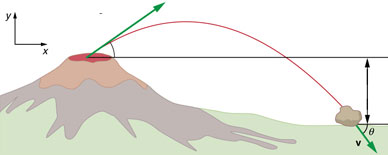 The Physics of
Projectiles
The Physics of
Projectiles
There is one aspect of volcanic
eruptions that this article will focus on in regards
to how physics applies to a volcanic eruption, which
will be the trajectory of projectiles during a
violent eruption. During an violent eruption,
volcanoes will launch projectile rocks, which will
arc through the air as the eruption occurs.
There are a few formulas which help us model
projectile motion in physics. First we will need to
determine the launch angle, which decomposes into
the initial velocity in the x and y direction.
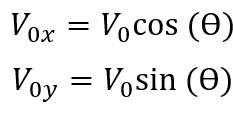
After the launch of the
projectile, there is no acceleration in the
x-axis, there is only a negative acceleration
due to gravity (-9.8 meters/second every
second). As such the initial y velocity, that
was decomposed in the above equation, will
decrease constantly due to the negative
acceleration, while the x-velocity will remain
the same until making contact with the ground.
This
means that it possible to determine the how
long it will take for the projectile to hit
the ground if you know the initial starting
height, initial angle, the final height,
and the initial velocity. To accomplish that,
we'll need the kinematic equation below:
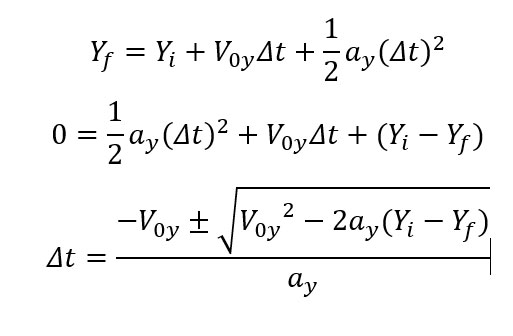
Once we have
how long it takes for the projectile to
hit the ground, we can solve for the
distance traveled by plugging the time
into the following kinematic equation:
This would correctly model the distance that a
rock which is launched from a volcanic
eruption would travel, which is pretty cool,
at least in my opinion.


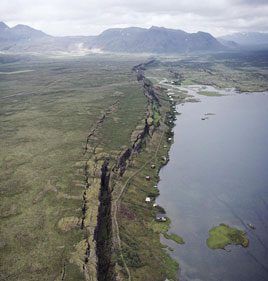
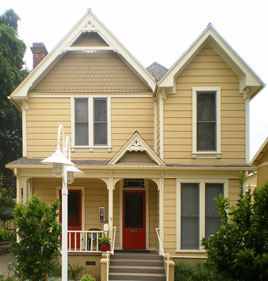

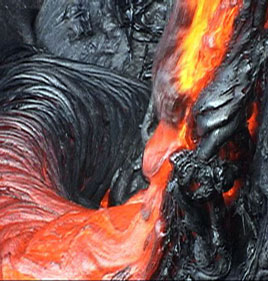

 What causes an
eruption in a volcano?
What causes an
eruption in a volcano?![]() For example, in an
andesitic magma saturated with water and six kilometers
below the surface, about 5 percent of its weight is
dissolved water. As this magma moves toward the surface, the
solubility of the water in the magma decreases, and so the
excess water separates from the magma in the form of
bubbles. As the magma moves closer to the surface, more and
more water exsolves from the magma, thereby increasing the
gas/magma ratio in the conduit. When the volume of bubbles
reaches about 75 percent, the magma disintegrates to
pyroclasts (partially molten and solid fragments) and erupts
explosively.
For example, in an
andesitic magma saturated with water and six kilometers
below the surface, about 5 percent of its weight is
dissolved water. As this magma moves toward the surface, the
solubility of the water in the magma decreases, and so the
excess water separates from the magma in the form of
bubbles. As the magma moves closer to the surface, more and
more water exsolves from the magma, thereby increasing the
gas/magma ratio in the conduit. When the volume of bubbles
reaches about 75 percent, the magma disintegrates to
pyroclasts (partially molten and solid fragments) and erupts
explosively.![]()
![]()




